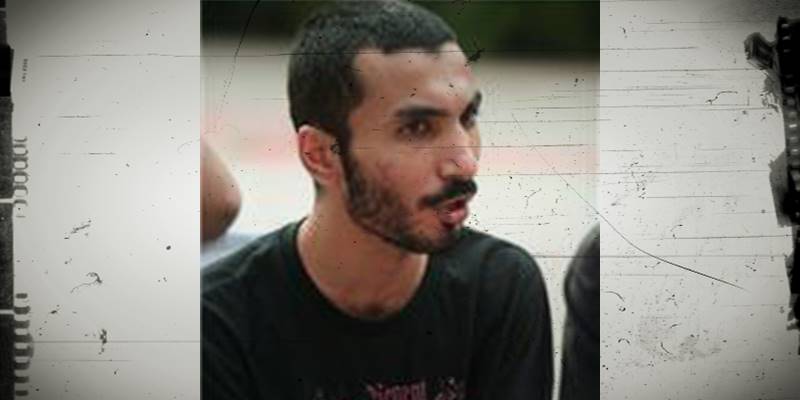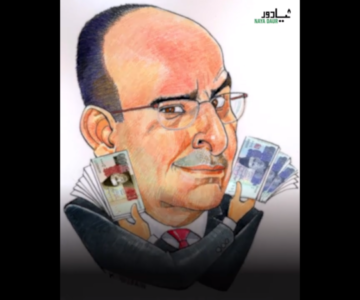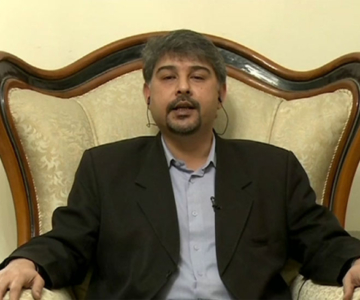Amina Baig writes for The NEWS:
When driving through the jungle of buildings, complicated maze of cars and billboards mushrooming around the Karachi skyline; randomly spurted words and images often catch one’s eye. Karachi’s version of graffiti is usually just writing on the wall announcing which teeny-bopper gang is at odds with whom, who sucks, who rocks and so on. Every now and then though, something that can actually be considered art because of its visual or conceptual value crops up.
Over the last few months, a symbol that has now become part of the Karachiite visual vocabulary has been creeping across almost any and everything in the city. A red triangle upon a rectangle – an eject sign, which according to Asim Butt, artist and stenciller of many of these signs is “multivalent.”
Asim’s graffiti was spurred on by the imposition of emergency in Pakistan in November 2007. However the message was not singular, nor was it a reaction to a single event.
While the eject sign literally referred back to the eject button or eject seat, it as Asim says, it was a nudge to “eject the military from the presidency. The sign could also be a red house (parliament dominated by the left) or simply a curious shape that reappeared in different parts of the city around the time of the emergency.”
The underlying feeling of the eject sign was as multi-layered as the underlying meaning of it. Asim used his stencils as a tool to express the anger he felt at the dismissal of basic rights. Everything from the way the judiciary and media were being handled to arrests of activists, some of whom are friends of Asim, snowballed into this dialogue with the public at large and the authorities in particular.
The project wasn’t a solitary one either. Asim chose a simple icon for its “easy reproducibility,” A complicated symbol would be hard for everyone to stencils of and Asim wanted to “involve non-artist activists in this art project.” The icon was kept simple also because “the times demand it to be,” says Asim, “the streets are more heavily policed than they were when I did other murals in 2003 and 2004.”
The eject signs raised questions in the minds of anyone who laid eyes on them, for their simplicity and persistent repetition. It also drew attention to Asim and the curious process he undertook every time he went out stenciling. “Aside from piquing the curiosity of passers by, graffiti, as it is by its very nature, illegal, incites the ire of the authorities as well.”
Asim was approached by the police on two occasions while carrying out this visual protest. Once at Sea View, as him and some People’s Resistance members painted posters and pavements with stencils Asim had brought, which attracted quite a crowd, they were approached by the police, which, , “threatened arrest, and confiscated the stencils. We negotiated our way out of that fix.”
The placement of the signs was at times meaningful and sometimes not so much. Eject signs found their way onto police containers across from Jinnah Courts as well as random walls of the KPT Underpass and Sea View. He did create large arrows out of repeated number 420s outside the Supreme Court, Karachi Bench as his way of saying that judges sworn under the PCO were “frauds.”
The arrows attracted the police to Asim’s endeavour once more. “I told them I was doing a school project,” says Asim, “which I was because I was taught to fight injustice at school. They wanted the photographs we had taken, but we got away with just deleting one, though we had to leave our materials behind.” Consequently, Asim doesn’t spend much time at the sites anymore.
The eject sign graffiti gave birth to more. The day after Benazir Bhutto’s assassination, Asim painted ‘stop’ signs on objects destroyed during the violence that followed the news. To Asim, these were more meaningful in their placement. “The “Stop” signs on torched cars and gutted banks were, I suppose, the most poignant coming together of surface, message and form,” says Asim, “where I went and layered the “installation” of destruction that the mob had left in its wake.”
In 2003, Asim had painted ‘Five ways to kill a man’, a mural, as a response to the war in Iraq across from the Abdullah Shah Ghazi Mazar. Aware and proactive he definitely is, defying the common perception of artists living in their own little bubble, as he actually brings his thoughts out on the streets. A school project in 2005 brought him to the walls of the Abdullah Shah Ghazi Mazar again, when he did a piece on sexuality. He has since followed up with “scribblings” around the mazar and some more at an akhara in Lahore. If memory serves correctly, the ‘Five ways…’ mural had generated all kinds of responses from people, ranging from curious to hostile, with parts of the mural being scraped away and eventually painted over, presumably as human figures being painted or drawn are simply offensive to the Pakistani eye.
It is a pleasant thought though, that the walls of Karachi can sport more than unintelligent scrawlings and political slogans. If the eject signs are anything to go by, political and social comment might find a spot on the millions of concrete surfaces in the city. Just as the eject signs rose some questions, Asim himself has “tailored the font and colours of some new work to speak directly to very effective I (heart) KHI campaign.” Asim believes that “like art, begins with a dialogue and burgeons into a discourse.”
Though Asim says he can’t claim to have made Karachi more beautiful, he does believe that a bit of colour here and there does add to the visual experience. Graffiti to him though is “also about wresting from the clutches of commercial billboards a morsel of space for non-commercial visuals.”
Can public art be used to beautify a city or add to the public aesthetic? “Public art can both cater to and question the public’s aesthetic or politics depending on what it aims to do,” says Asim, “and the public is, of course, not a monolithic mass. It is as heterogeneous and varied as the number of people it includes, and it’s aesthetic as volatile as the moment it inhabits.”



